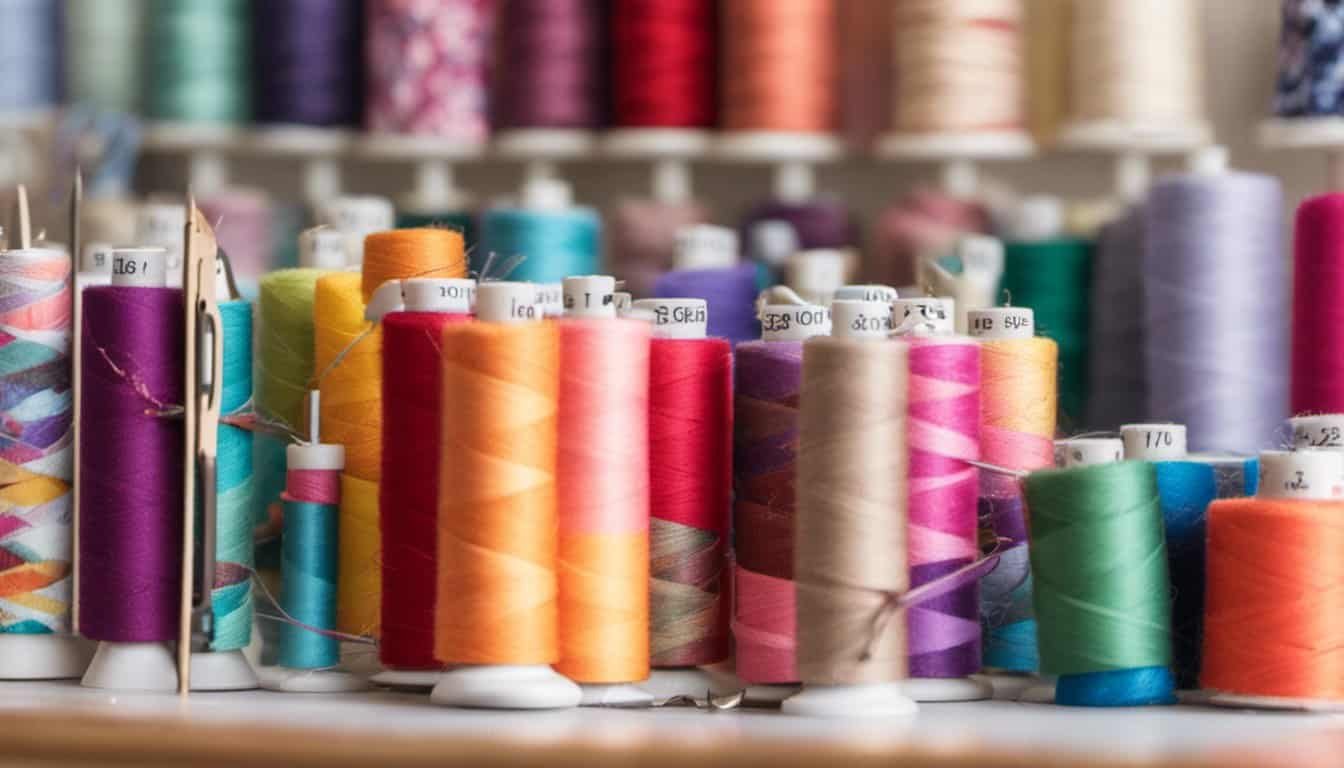Imagine slipping into a dress that transports you back in time, capturing the elegance and charm of vintage fashion. Sewing your own vintage-inspired dress lets you create a unique piece that reflects your personal style while honoring classic designs.
You don’t need to be a seasoned tailor to get started. With the right patterns and a bit of guidance, you can craft a stunning dress that feels both timeless and modern. Whether you’re aiming for the flirty flair of the 1950s or the bohemian vibes of the 1970s, this guide will walk you through each step, making the process enjoyable and rewarding.
Selecting the Perfect Fabric
Choosing the right fabric sets the foundation for your vintage-inspired dress. It impacts the dress’s drape, comfort, and overall appearance.
Choosing Vintage-Inspired Fabrics
Select fabrics that reflect the era you’re inspired by. For 1950s styles, opt for cotton, gingham, or silk. If you’re aiming for a 1970s look, consider polyester, linen, or velvet. Metallic threads and lace add authentic detailing.
Understanding Fabric Weight and Texture
Fabric weight and texture determine how your dress hangs and feels. Lightweight fabrics like chiffon offer a flowy appearance, while medium-weight fabrics such as satin provide structure. Heavier fabrics like wool or brocade are ideal for more structured vintage styles.
| Fabric Type | Weight | Texture | Ideal For |
|---|---|---|---|
| Chiffon | Light | Sheer, flowy | 1950s fit-and-flare dresses |
| Satin | Medium | Smooth, glossy | Classic tea dresses, 1940s styles |
| Brocade | Heavy | Patterned, rich | 1920s flapper dresses |
| Linen | Medium | Crisp, natural | 1970s bohemian styles |
| Velvet | Heavy | Soft, plush | 1960s mod dresses |
Ensure the fabric’s weight suits your design and your sewing skill level. Test samples before committing to your project.
Gathering Essential Tools and Materials
Before sewing your vintage-inspired dress, collect the necessary tools and materials to ensure a seamless crafting experience.
Must-Have Sewing Tools
- Sewing Machine: Choose a machine that handles various fabric weights and offers adjustable stitch settings.
- Measuring Tape: Use a flexible tape for accurate body measurements and fabric sizing.
- Scissors: Keep separate sharp fabric scissors and smaller ones for trimming threads.
- Pins and Pincushion: Secure fabric pieces together with quality pins and organize them on a sturdy pincushion.
- Thread: Select durable threads in colors that match your fabric for strong seams.
- Seam Ripper: Remove mistakes efficiently with a reliable seam ripper.
- Iron and Ironing Board: Press seams and fabric for a professional finish using a high-quality iron.
- Marking Tools: Use tailor’s chalk or fabric markers to outline patterns and measurements on your fabric.
Sourcing Authentic Vintage Patterns
- Online Marketplaces: Explore platforms like Etsy and eBay for a diverse range of vintage patterns from different eras.
- Vintage Catalogs: Visit thrift stores and antique shops to find old sewing catalogs featuring authentic patterns.
- Pattern Libraries: Access specialized online libraries that offer scanned vintage patterns for purchase or free download.
- Sewing Communities: Join forums and social media groups where members share and trade vintage sewing patterns.
- Local Sewing Shops: Check with local fabric and sewing stores for vintage pattern collections and recommendations.
Step-by-Step Sewing Process
Follow these steps to create your vintage-inspired dress with ease. Each phase ensures your dress turns out beautifully and authentically.
Preparing Your Pattern and Fabric
- Select Your Pattern
- Choose a pattern matching your desired vintage era.
- Verify the pattern size fits your measurements using the included sizing chart.
- Prepare the Fabric
- Wash and iron your fabric to prevent shrinkage and remove wrinkles.
- Lay the fabric flat on a cutting surface, ensuring grain lines align correctly.
- Transfer Pattern Pieces
- Pin the pattern pieces to the fabric, matching grain lines and markings.
- Trace any necessary markings, such as darts and notches, onto the fabric.
- Cut the Fabric
- Use sharp fabric scissors for clean edges.
- Cut each pattern piece accurately, maintaining consistency for all pieces.
Cutting and Assembling the Dress
- Cutting the Fabric
- Follow the pattern layout to optimize fabric usage.
- Double-check each piece before cutting to avoid mistakes.
- Marking the Fabric
- Use tailor’s chalk or fabric markers to mark darts, pleats, and other details.
- Ensure all markings are clear and visible but won’t show through the fabric.
- Sewing the Pieces Together
- Start by sewing darts and seams as indicated by the pattern instructions.
- Use a straight stitch for most seams, switching to a zigzag stitch for stretch fabrics.
- Assembling the Dress Structure
- Attach the bodice to the skirt, aligning side seams and ensuring symmetry.
- Insert any necessary linings or interfacings for added structure and comfort.
- Adding Finishing Touches
- Hem the bottom of the dress, using a consistent stitch length for a professional look.
- Insert zippers or buttons, ensuring they are securely attached and functional.
- Final Pressing
- Iron all seams and hems to set stitches and give the dress a polished appearance.
- Inspect the dress for any loose threads or unfinished edges, making corrections as needed.
By following these steps meticulously, you’ll craft a vintage-inspired dress that reflects timeless elegance and your personal style.
Adding Vintage Details and Finishes
Enhance your dress with authentic vintage touches that capture the essence of your chosen era. Focus on thoughtful embellishments and precise finishes to complete your timeless piece.
Incorporating Classic Embellishments
Add character with period-specific details:
- Lace Trim: Sew delicate lace along necklines and hems for a 1950s flair.
- Embroidery: Use floral or geometric patterns typical of the 1970s on pockets and seams.
- Buttons: Select antique-style buttons made of metal or fabric to match the dress’s style.
- Appliqués: Attach decorative patches or fabric shapes to the bodice or skirt for added texture.
- Ribbons and Bows: Incorporate satin or velvet ribbons at waistlines or sleeves to enhance femininity.
Achieving Authentic Hemlines and Sleeves
Ensure your dress reflects the silhouette of the era:
- Hemline Length:
- 1920s: Drop waist with hemlines around mid-calf.
- 1950s: Knee-length with full, swinging skirts.
- 1970s: Maxi lengths with flowing, relaxed silhouettes.
- Sleeve Styles:
- 1930s: Bias-cut sleeves with subtle puffing.
- 1960s: Sleeveless or cap sleeves for a sleek look.
- 1980s: Bell sleeves with dramatic flare.
- Construction Tips:
- Use pattern guidelines to shape sleeves accurately.
- Press hems and seams to maintain crisp, authentic lines.
- Reinforce stress points with topstitching to ensure durability.
By integrating these vintage embellishments and tailoring hemlines and sleeves to your chosen era, your dress will embody the classic charm and elegance of timeless fashion.
Customizing for a Perfect Fit
Achieving a flawless fit ensures your vintage-inspired dress complements your unique shape. Tailoring patterns and making precise adjustments bring your design to life.

Measuring and Adjusting Patterns
Accurate measurements form the foundation of a well-fitted dress. Start by:
- Taking Measurements: Measure your bust, waist, hips, and shoulders using a flexible tape. Record each measurement precisely.
- Selecting the Right Pattern Size: Match your measurements to the pattern’s size chart. Choose the closest size as your base.
- Adjusting for Fit: Modify the pattern by adding or reducing inches where necessary. Focus on areas like the bust curve, waist taper, and hip width to ensure comfort and movement.
- Testing Adjustments: Create a mock-up using inexpensive fabric. Sew the adjusted pattern to identify any needed changes before cutting into your chosen fabric.
Alterations for Personalized Style
Personalizing your dress enhances both fit and aesthetic. Implement these alterations:
- Length Modification: Adjust the hemline to suit your height and style preference. Shorten or lengthen the dress by measuring the desired length from the shoulder or waist.
- Sleeve Customization: Change sleeve styles by altering the pattern. Convert long sleeves to cap or sleeveless options to match your comfort and vintage era.
- Neckline Adaptation: Modify the neckline by adjusting the pattern. Create sweetheart, boat, or V-necks to complement your neckline and garment design.
- Adding Darts and Pleats: Insert darts for shaping the bust and waist. Incorporate pleats to add volume or detail, enhancing the dress’s vintage charm.
- Incorporating Details: Include elements like belts, bows, or lace trims. Attach these features at strategic points to personalize your dress and reflect the chosen vintage style.
By meticulously measuring, adjusting patterns, and making thoughtful alterations, you tailor your vintage-inspired dress to fit perfectly and showcase your personal flair.
Conclusion
You’ve taken a wonderful step into the world of vintage fashion by creating your own dress. Each stitch you sew brings timeless elegance to life in a way that’s uniquely yours. Enjoy the satisfaction of wearing a piece that reflects classic styles with your personal touch.
As you continue your sewing adventures you can explore more vintage styles and techniques. Embrace the creativity and joy that comes with crafting something beautiful with your hands. Your vintage-inspired dress is just the beginning of many stylish creations to come.

















